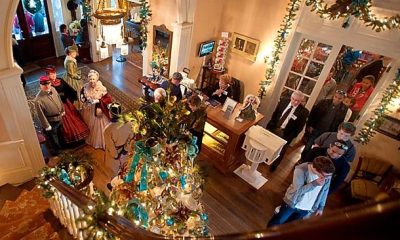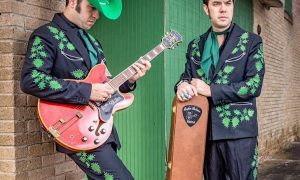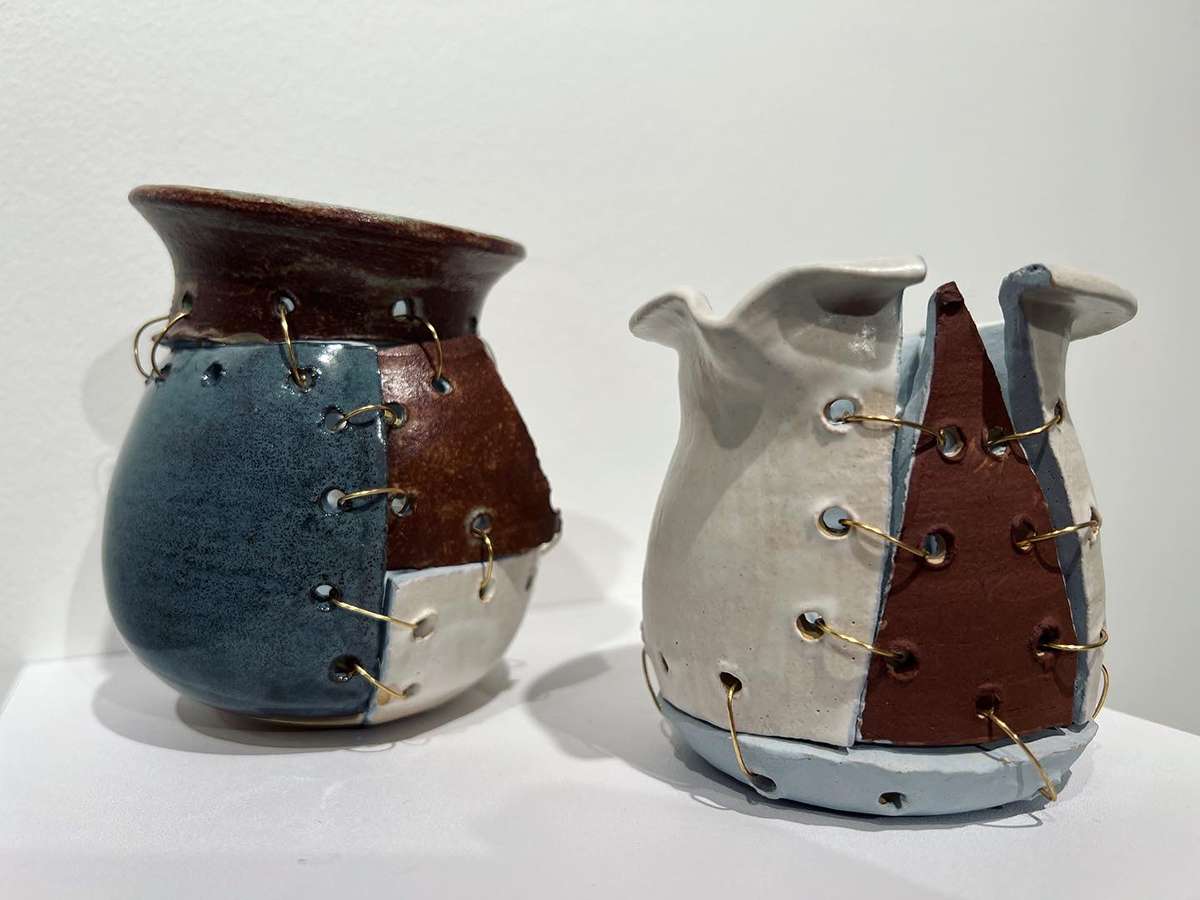

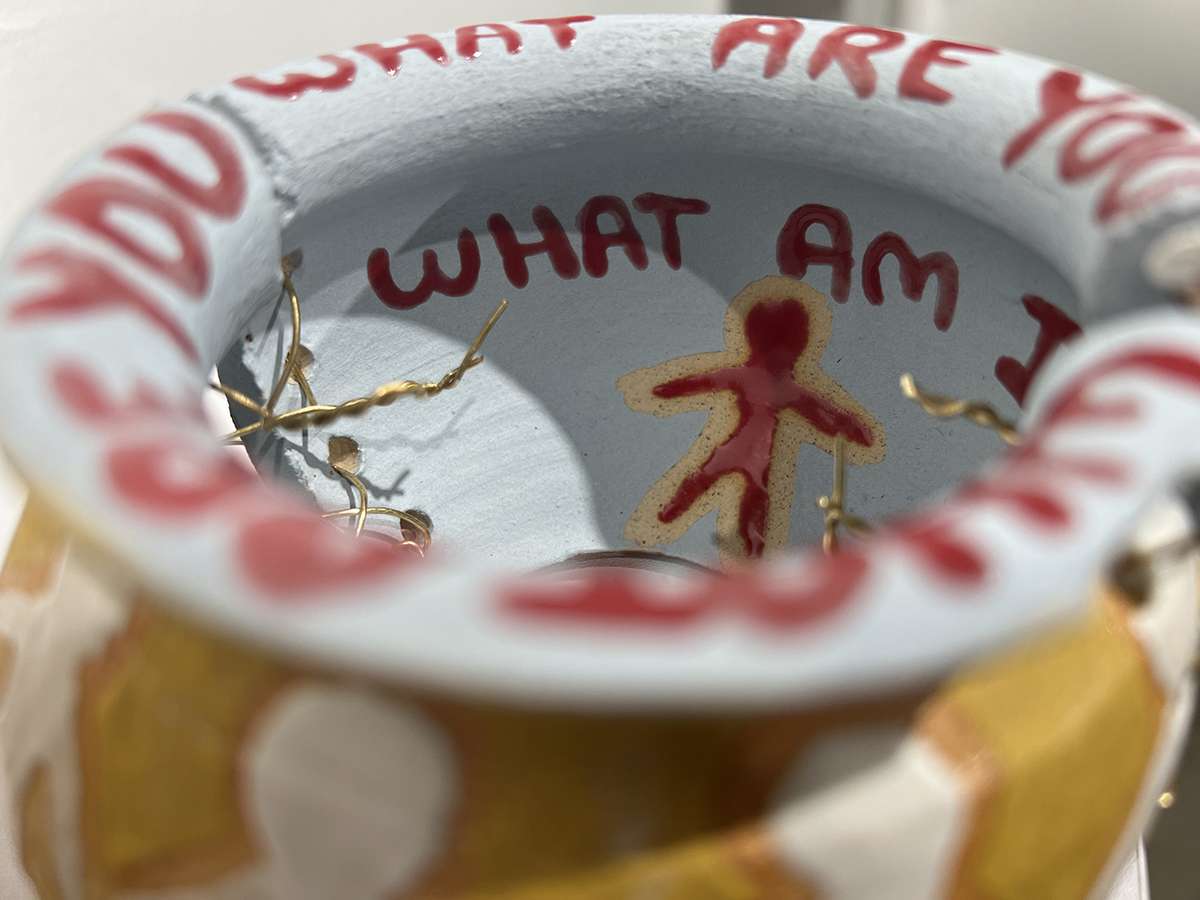
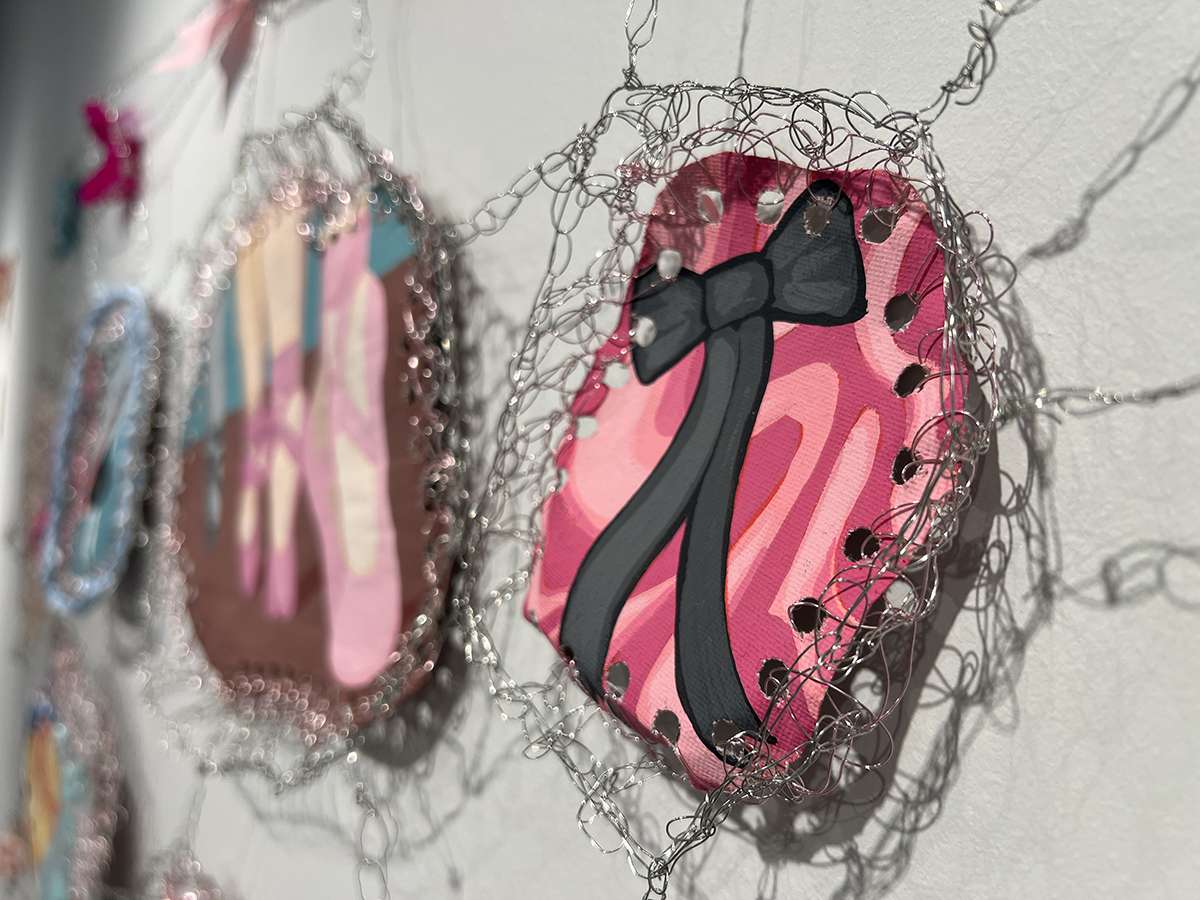
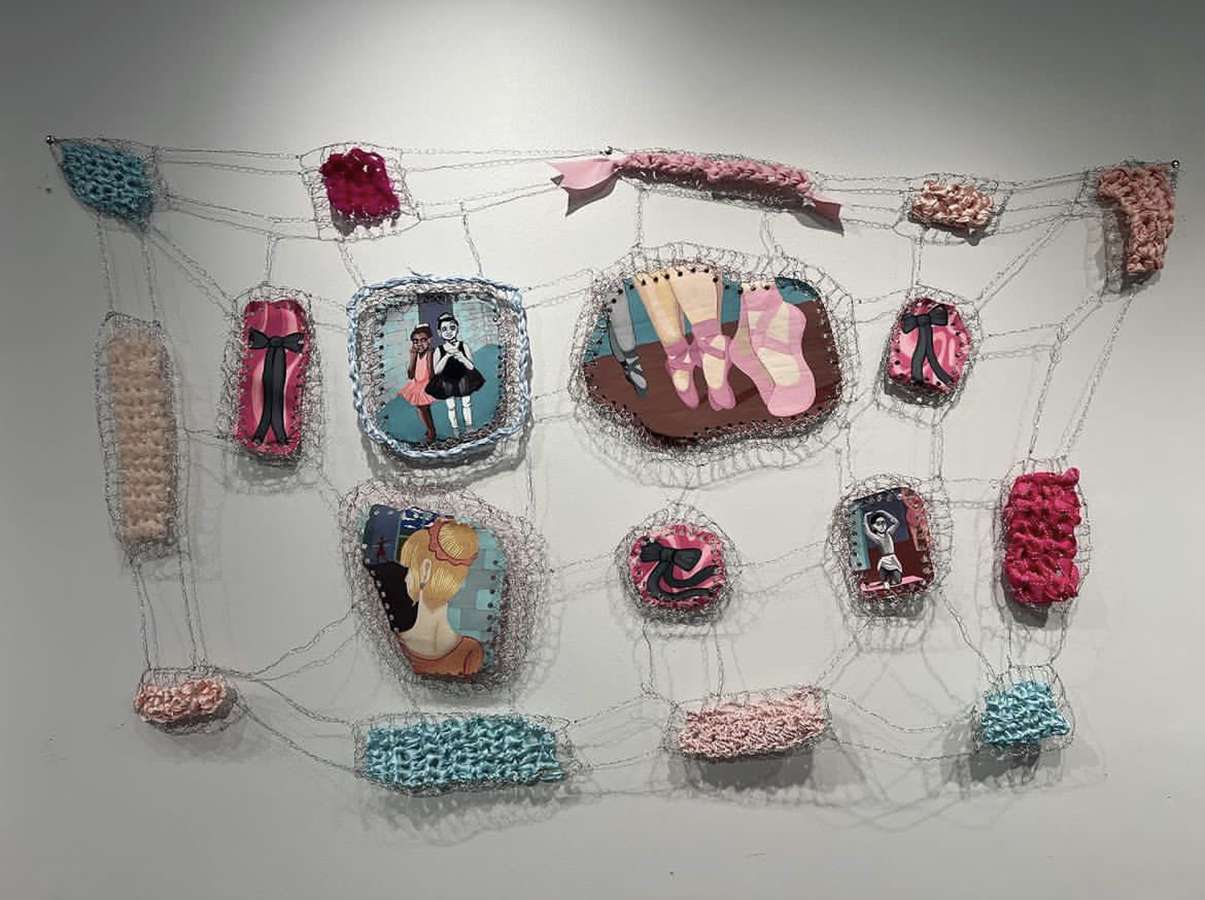

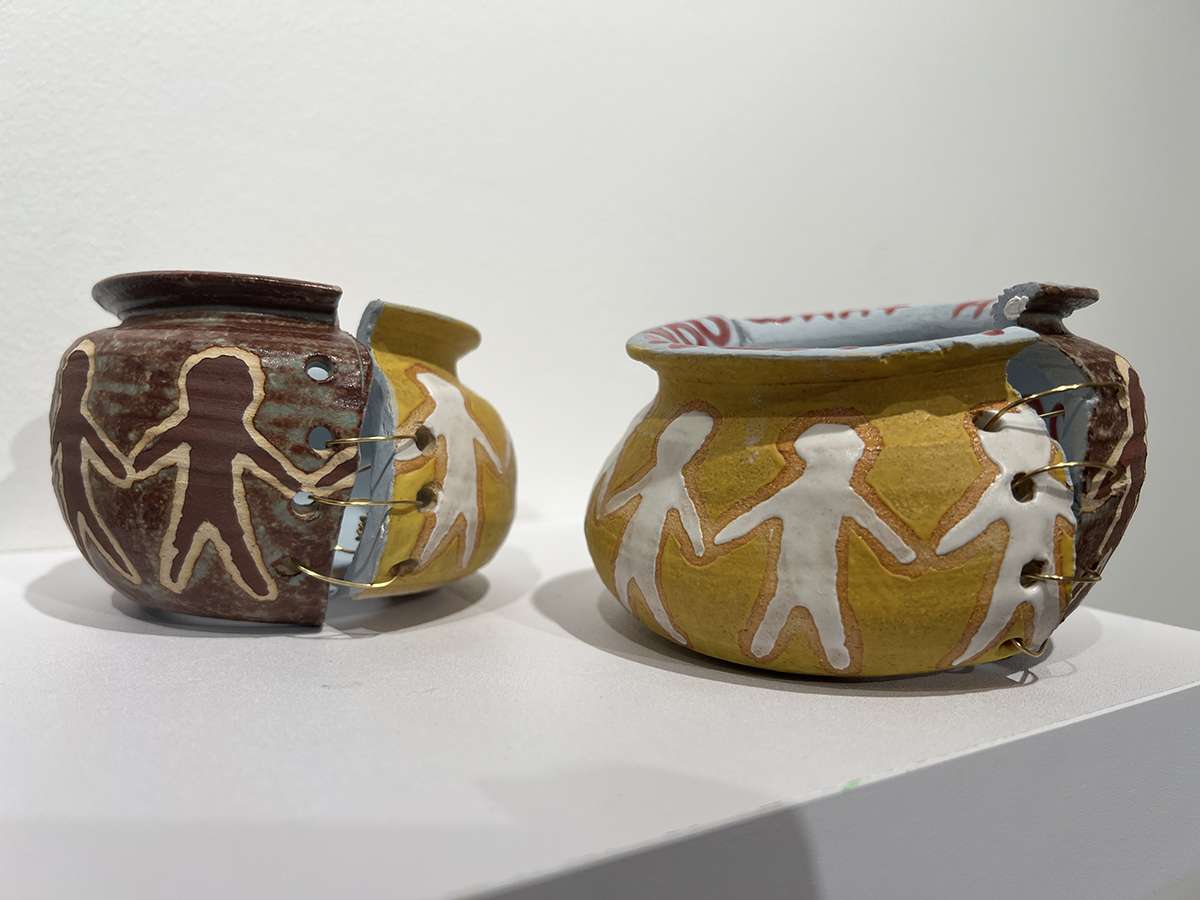
Inside the Artist’s Studio
Singing Birds and Laughing Bees: Lauren Careese Alexander
Derrick White
“I have been doing art since I was a toddler. I have always loved creating in whatever media I can. However, it wasn’t until high school I decided being an artist was what I wanted to do with the rest of my life. I was also influenced by the world around me. I have grown up living in Dallas, Texas where there is a large art scene and so my everyday life has always been full of art in one way or another. I remember going to the Texas State Fair as a kid every year and seeing the art competition they always have, going to the Dallas Museum of Art to see older and more traditional works, and walking around the city where murals and sculptures seem to be everywhere. My parents have also been encouraging of my art journey from the very start, never discouraging me and always adamantly supporting my growth as an artist,” says artist Lauren Careese Alexander. Lauren received a Bachelor of Fine Arts degree from the University of Texas at Tyler and is currently working towards a terminal degree of Master of Fine Arts at Southern Methodist University, Dallas. A terminal degree is the highest degree available in a discipline awarded because a doctoral-level degree is neither available nor appropriate. A Master of Fine Arts degree involves extensive study and the creation (or performance) of a body of artwork and is a full-time 60-credit-hour degree. It is often the preferred requirement for teaching visual art at the college or university level and should always pay at the doctoral level.
“I believe art has given me a better appreciation for the world around me. I am intentional about living in the moment, stopping, and admiring the flowers or a caterpillar on the ground, taking in the sights and sounds of nature as I go for a hike, being content just listening to my friends converse with one another, watching my family interact and laugh with each other, and many other examples of the great things life has to offer. By learning how to observe for the sake of making art, it has also taught me to appreciate this world we are living in even amid all the darkness and pain we experience,” explains Lauren. When I hear someone say something like this, I am reminded of one of my favorite Kurt Vonnegut quotes I come back to time and time again, “The arts are not a way to make a living. They are a very human way of making life more bearable. Practicing an art, no matter how well or badly, is a way to make your soul grow, for heaven’s sake. Sing in the shower. Dance to the radio. Tell stories. Write a poem to a friend, even a lousy poem. Do it as well as you possibly can. You will get an enormous reward. You will have created something.”
Art making does not have to be connected to one’s livelihood although there are plenty of opportunities out there for those wanting it to be. One example I share a lot is to suggest watching the end credits of any film and hundreds, possibly thousands, of names will scroll by. All the people who contributed to the creation, in a myriad of capacities, of the movie being made and who were gainfully employed and paid for their efforts. We need to abandon the romanticized notion of the tortured creative, reclusive painter living in a sketchy loft apartment in New York City, wearing a beret and smoking clove cigarettes. Lauren addresses this topic stating, “The starving artist conversation comes up quite a lot and it can feel frustrating to constantly defend my position as an artist. I feel less frustrated now that I have been working towards my art education for so long, but it upset me when I was first getting started as an undergraduate student. I remember feeling frustrated that most careers do not have to defend themselves so often and most people do not get told weekly they will starve if they continue down this creative path. I even had someone tell me one time I needed to marry a doctor or else I would never make it in this life. I still get these conversations quite frequently, but they have become easier to ignore.” Adding, “To anyone experiencing frustrations as an artist, I would encourage you to keep pushing and keep making. Art is a wonderful, beautiful journey and it is such a blessing to be able to not only create art but to share it with others as well. Stay encouraged, keep challenging yourself, and happy making.”
Lauren describes her work this way, “My work is mostly abstracted but also contains recognizable images from life. Sometimes I paint patterns, colors, and nonrepresentational shapes and I will occasionally paint from photographs as well. When others view my work, I hope they sense the feelings of disjointedness and otherness I have experienced as a biracial woman. My work reflects how I feel I am two cultures pieced together into one whole being, so I hope my experience comes across in some capacity to viewers. However, I have always been open to interpretation, and I love it when others view my work through their perspectives and experiences. I think that is one of the best aspects of viewing art.”
Some of the influences Lauren credits in her work include Harriet Powers (considered the mother of the African-American story quilt tradition). “She does not have very much documented work, but she has this beautiful Bible Quilt from 1885-1886 that speaks to me. Her design is unusual for the time because it is quite illustrative rather than patterned. The narrative aspect fascinates me, and I love she took stories from the book of Genesis and put her African-American twist on it. It is simple but full of symbolism and storytelling,” Lauren describes. Concluding, “Recently, I have been researching artists who put their faith in their work in a more nontraditional way. In school, I have learned a lot about stained glass windows, illuminated manuscripts, sculptures of biblical prophets, and frescoes of scenes from the Bible, but the Harriet Powers’ quilt feels so special and unique to me.”
Learn more at: @laurencareese.art




